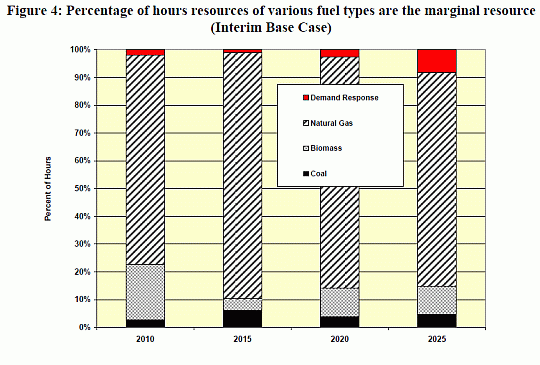 In my post last fall on Rob Lowe’s plug-in hybrid, I argued that in the absence of a cap on greenhouse gas emissions, switching to plug-in hybrids might actually be worse for the climate than just switching to regular hybrids. I no longer believe that. Electric vehicles are winners for the climate in the Northwest.
In my post last fall on Rob Lowe’s plug-in hybrid, I argued that in the absence of a cap on greenhouse gas emissions, switching to plug-in hybrids might actually be worse for the climate than just switching to regular hybrids. I no longer believe that. Electric vehicles are winners for the climate in the Northwest.
My argument then, based on research at the Pacific Northwest National Laboratory, was that the “marginal kilowatt-hour” — the extra electricity that’s generated when consumption grows — in Cascadia is usually from fossil fuels and, in the off-peak, middle-of-the-night hours when most electric vehicles would be charged, extra electricity comes from burning coal. Burning coal is worse for the climate than running hybrid vehicles on gasoline.
What changed my mind was better research, conducted by the Northwest Power and Conservation Council, about where the region’s marginal kilowatt-hours come from. NPCC did a meticulous, hour-by-hour assessment of marginal power generation in the Pacific Northwest [PDF]. They discovered, to my surprise, that the overwhelming majority of the Northwest’s marginal electricity, even during off-peak hours, comes not from coal but from natural gas. In Cascadia, we only get our marginal kilowatts from coal during the midnight hours on a few low-demand weekends. Coal-fired power is the marginal electricity consumed in fewer than 5 percent of hours all year. This wonkalicious figure illustrates.

As a result, the consequences of overnight charging of electric vehicles is to incrementally increase the amount of natural gas that Cascadia burns (or causes to be burned elsewhere). And the greenhouse gas implications of this scenario are substantially cleaner than burning gasoline in a regular hybrid vehicle.
 Specifically, revisiting this figure from my original post, a regular hybrid generates about 290 grams of carbon dioxide per mile, while a plug-in hybrid charged with electricity generated at a combined-cycle natural gas plant (as most of ours is) generates about 240 grams per mile. An all-electric vehicle generates much less, of course, because it never uses gasoline (shown in red in the figure).
Specifically, revisiting this figure from my original post, a regular hybrid generates about 290 grams of carbon dioxide per mile, while a plug-in hybrid charged with electricity generated at a combined-cycle natural gas plant (as most of ours is) generates about 240 grams per mile. An all-electric vehicle generates much less, of course, because it never uses gasoline (shown in red in the figure).
I still have worries: What are the ripple effects in the electricity market and in the natural gas market of burning more natural gas for power in the West? Does it cause other utilities elsewhere to burn more coal? What if natural gas prices rise further than they already have?
But I also have a hope: the Western Climate Initiative, if it is adopted by its member states and provinces, it will put electricity on a predictable path to clean energy. In fact, electricity will be under the cap before transportation fuels, if this week’s proposal is enacted. And in the presence of a binding limit on emissions, my worries about electric vehicles’ unintended consequences vanish entirely.
So the real conclusion of this post, like the earlier one, is that we need a carbon cap. Cap, cap, cap!


